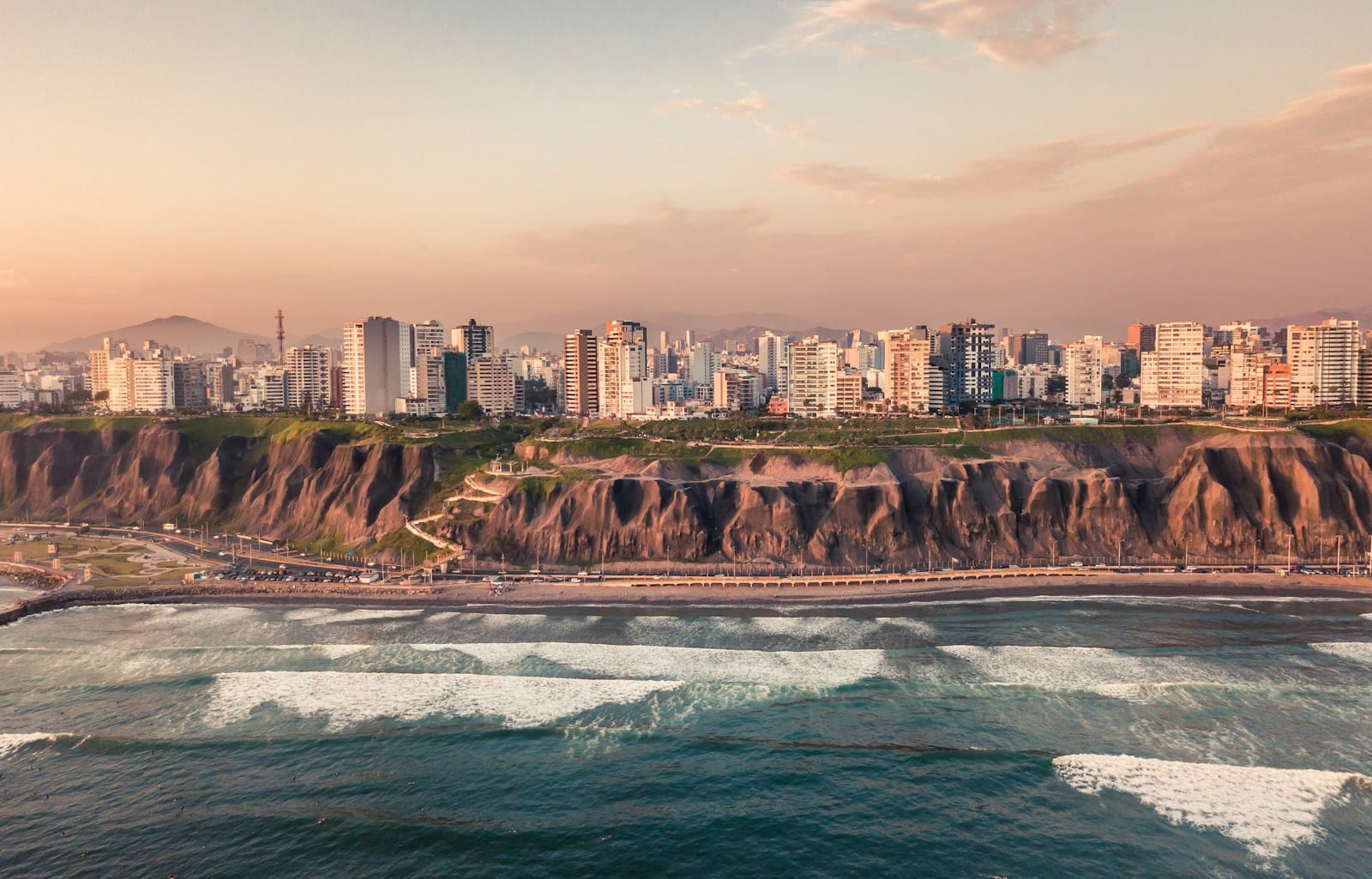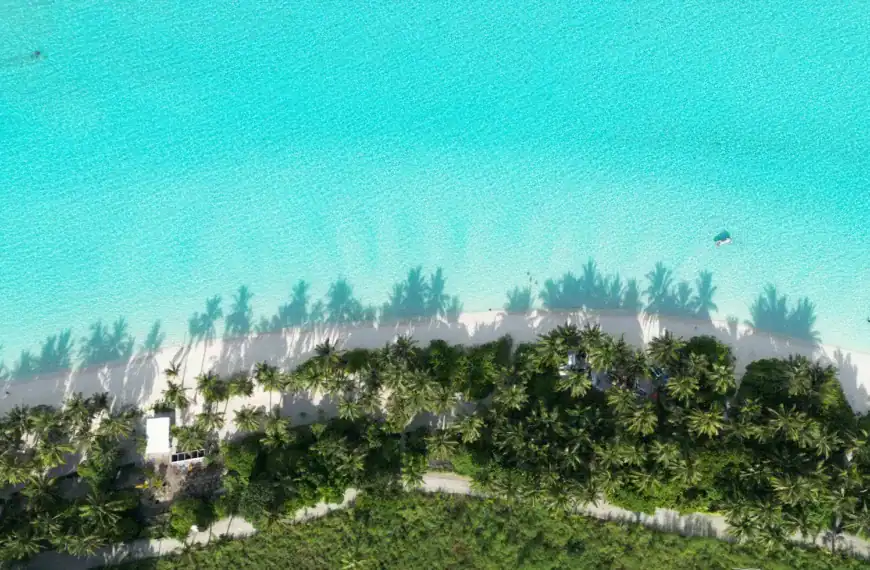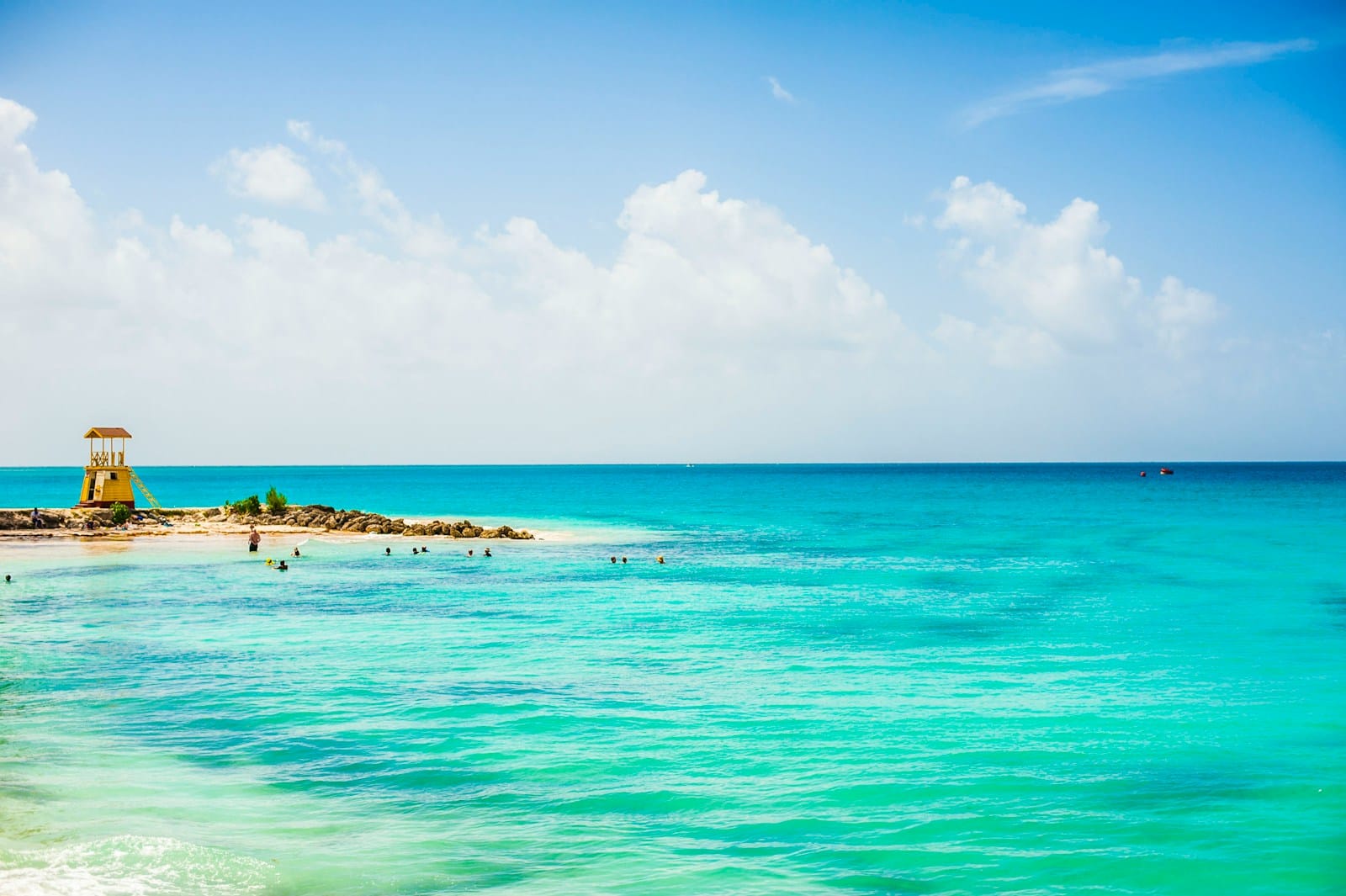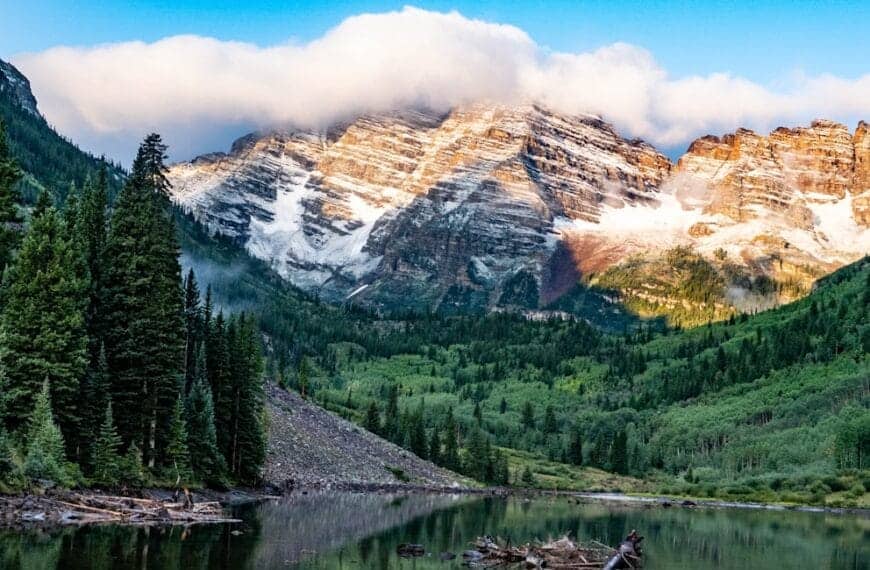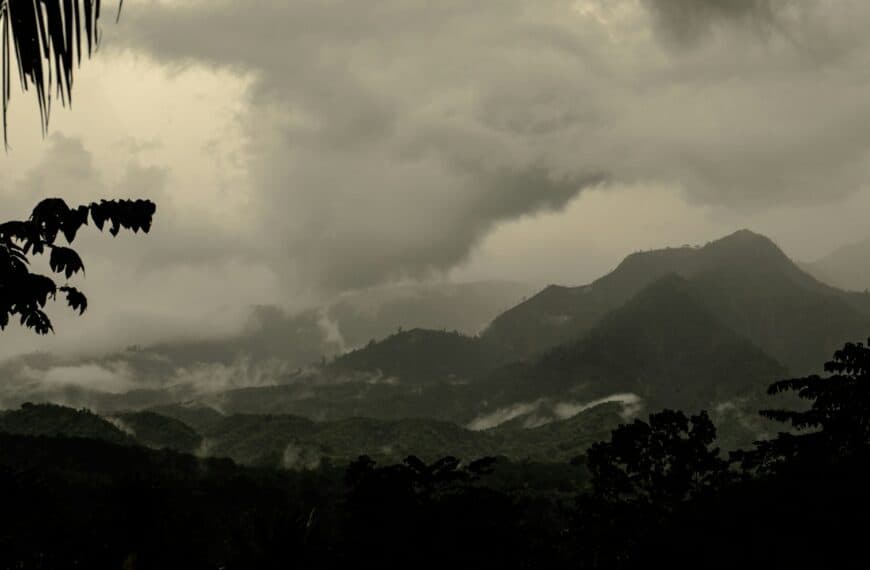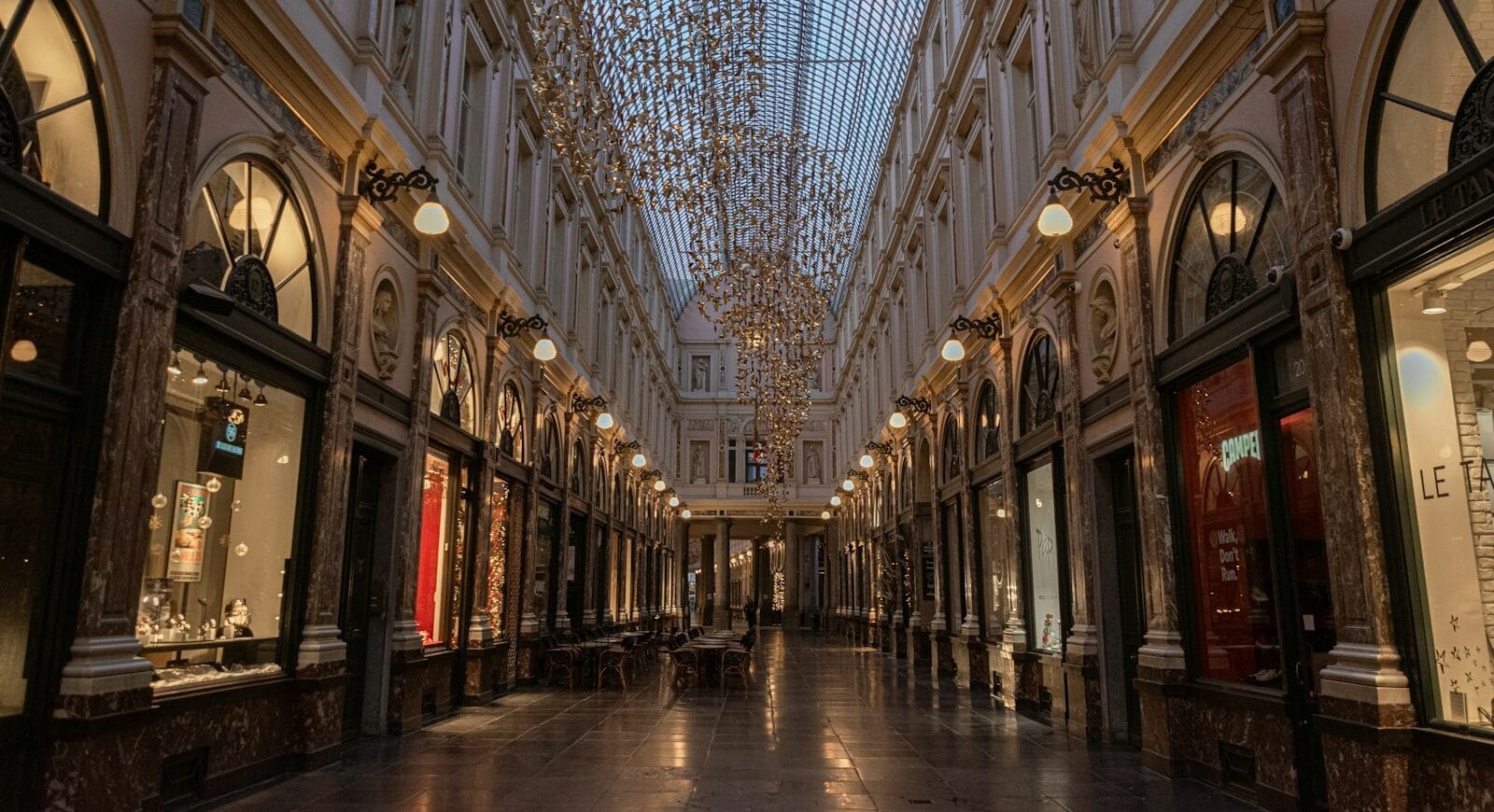Peru Travel Guide: From Andean Peaks to Amazon Wonders
Intro to Peru Travel Guide
Peru is a land of breathtaking contrasts — where the ancient Inca empire meets vibrant modern cities, and jagged Andean peaks plunge into dense Amazon rainforests. From the mystery of Machu Picchu and Cusco’s cobbled streets to the wildlife-rich Amazon basin and Pacific surf towns, Peru offers travelers a journey layered with history, culture, and natural beauty. This Peru travel guide highlights the regions, experiences, and itineraries that make the country one of South America’s most unforgettable destinations.
Start planning your journey with our complete Peru Tour Guide — from regions and top things to do in Peru to itineraries, food, and safety tips.
Exploring Peru
Amazonas | Ancash | Arequipa | Ayacucho | Cajamarca | Callao | Cusco | Huancavelica | Huánuco | Ica | Junín | La Libertad | Lambayeque | Lima | Loreto | Madre de Dios | Moquegua | Pasco | Piura | Puno | San Martín | Tacna | Tumbes | Ucayali
💡Quick Facts:
Destination: Peru
Continent: South America
Country: Republic of Peru
Administrative Divisions: 25 regions (including Lima Province, Cusco, Arequipa, Loreto)
Area: 1,285,216 km² (496,225 mi²)
Population: ~34 million
Density: ~27 people per km²
Capital: Lima
Regions/Subregions: Coast (Costa), Highlands (Sierra), Amazon (Selva)
Official & Regional Languages: Spanish (official, spoken by 83%); Quechua and Aymara official in some regions; many Amazonian languages
Currency: Peruvian Sol (PEN, S/.)
Time Zone(s): Peru Standard Time (UTC–5, no DST)
Airports: Jorge Chávez International (LIM, Lima), Alejandro Velasco Astete International (CUZ, Cusco), Rodríguez Ballón International (AQP, Arequipa), Coronel FAP Francisco Secada Vignetta International (IQT, Iquitos)
Climate: Diverse — arid coastal deserts, temperate Andean highlands, tropical Amazon rainforest
Known For: Machu Picchu (UNESCO), Sacred Valley, Amazon rainforest, Lake Titicaca, Nazca Lines, Peruvian cuisine (ceviche, pisco), Inca heritage
🛂Arrival Info:
Visa Policy: Visa-free for 90+ countries (including U.S., EU, UK, Canada, Australia)
Visa Required: Some Asian, African, and Middle Eastern nationalities
Visa on Arrival: Not available (must apply in advance if required)
Max Tourist Stay: 183 days (non-extendable for tourism)
Onward Travel: Proof of return/onward ticket may be required
Immigration Authority: Superintendencia Nacional de Migraciones
Check official guidelines via Peru’s Immigration Office
🏥Health Info:
Vaccines Required: Yellow Fever if arriving from endemic countries
Vaccines Recommended: Routine immunizations, Hepatitis A, Typhoid, Yellow Fever for Amazon region
Health Risks: Altitude sickness in Andes (Cusco, Puno, Huaraz); mosquito-borne diseases in Amazon (dengue, Zika, malaria)
Hospitals: Modern hospitals in Lima; limited care in rural/highland areas
Insurance: Strongly recommended; coverage for evacuation advised
Emergency Number: 105 (police), 106 (ambulance)
🚑 Check travel insurance options for travel emergencies, delays, and medical needs abroad — Get coverage here
💉 Stay Informed with Official Updates: WHO – International Travel & Health | CDC – Travel health updates
🚨Travel Advisory:
Safety Level: Popular tourist areas generally safe; petty theft and scams common in cities and transport hubs
Petty Crime: Pickpocketing, bag snatching in Lima, Cusco, Arequipa
High-Risk Areas: Some border regions with Colombia/Brazil due to narcotics activity
Natural Risks: Earthquakes, landslides in rainy season (Dec–Mar), flooding in Amazon
🌍Track Real-Time Official Updates: US Travel Advisory | UK Foreign Travel Advice | Government of Canada | NZ SafeTravel
🥳Holidays:
New Year’s Day: Jan 1
Holy Week (Semana Santa): Mar/Apr (dates vary)
Inti Raymi (Festival of the Sun): Jun 24 (Cusco)
Independence Day: Jul 28–29
All Saints’ Day: Nov 1
Christmas Day: Dec 25
(Local: Señor de los Milagros procession in Lima, Oct; Virgen de la Candelaria in Puno, Feb)
💰Visitor Info:
Currency: Peruvian Sol (PEN, S/.)
Cards & ATMs: Credit/debit widely accepted in cities; ATMs available; cash preferred in rural areas
Tipping: 10% at restaurants if service not included; tips appreciated for guides/drivers
Tourist Taxes: Hotel tax exemptions for foreign visitors who pay in USD or card
Duty-Free: Allowed up to 3 liters of alcohol, 400 cigarettes
Average Budget: $40–60/day (budget), $80–150/day (mid-range), $200+ (luxury)
🛫Airports:
Lima (LIM): Main international gateway; direct connections to North and South America, Europe
Cusco (CUZ): Closest airport to Machu Picchu and Sacred Valley
Arequipa (AQP)
Iquitos (IQT), Piura (PIU): Regional access
Domestic flights useful due to long road travel times
🧳 Delayed or canceled flight? Check if you’re eligible for compensation
🚍Transport:
Local Transit: Taxis, buses, colectivos (shared vans), ride-hailing apps (Cabify, Uber in Lima)
Intercity: Extensive long-distance bus network; domestic flights popular due to geography
Trains: Tourist trains to Machu Picchu (PeruRail, Inca Rail)
Driving Laws: Right-hand traffic; challenging roads in Andes; IDP recommended
🚗 Book reliable airport transfers and in-city rides in advance. Reserve your ride here
🛰️Connectivity:
Mobile Networks: Claro, Movistar, Entel, Bitel
Coverage: Good in cities; weak in highlands and Amazon
eSIM Options: Available through international providers (Airalo, Holafly)
Public Wi-Fi: Common in hotels, cafes, airports
🛜 Stay connected abroad with affordable eSIM data packs. Get your eSIM here
📜Laws & Etiquette:
Drinking Age: 18
Smoking Laws: Banned in public indoor spaces
Dress Code: Casual; warm layers needed in highlands; modest attire in churches
Etiquette: Greetings with handshake or kiss on cheek; respect indigenous customs
LGBTQ+ Safety: Legal protections in place, but conservative attitudes in rural areas
👮Emergency Info:
Emergency Number: 105 (police), 106 (ambulance), 116 (fire)
Tourist Police: Present in Lima, Cusco, major tourist sites
Tourist Info: PromPerú – Official Tourism
🗺️US/UK Embassies Abroad: US Embassies | UK Embassies
🏛️ Embassy locator tools: Embassies Worldwide
🌞Weather:
Coastal Desert (Lima, Paracas): Mild, cloudy winters (15–20°C / 59–68°F); sunny summers (25–30°C / 77–86°F)
Highlands (Cusco, Puno): Dry season Apr–Oct (sunny days, cold nights); rainy season Nov–Mar
Amazon (Iquitos, Puerto Maldonado): Hot, humid year-round (25–35°C / 77–95°F), heavy rainfall Nov–Mar
Best Time to Visit: May–Sep (dry season for Andes & Amazon, sunny coast)
🌦️ Stay prepared—check the weather forecast for your destination — Weather Forecast
Discover Peru Region by Region
Lima & the Central Coast
- Lima – The capital blends colonial architecture with a thriving culinary scene. Explore the historic center, coastal Miraflores, and world-class museums like Larco.
- Paracas & Islas Ballestas – A coastal reserve and “Poor Man’s Galápagos” where boat tours reveal sea lions, penguins, and seabirds.
- Nazca – Home to the mysterious Nazca Lines, enormous geoglyphs best seen by small plane flights.
The Andes: Cusco, Sacred Valley & Machu Picchu
- Cusco – Once the Inca capital, today a lively city with markets, plazas, and stone streets that blend colonial and Inca heritage.
- Sacred Valley – Terraced hills, traditional villages, and sites like Ollantaytambo make this region a cultural and scenic treasure.
- Machu Picchu – Peru’s crown jewel, accessible by train or the Inca Trail. The ruins’ mist-shrouded terraces and temples are among the world’s top travel icons.
Southern Highlands
- Arequipa – Known as the “White City” for its volcanic stone architecture, with views of the Misti Volcano and nearby Colca Canyon.
- Colca Canyon – Twice as deep as the Grand Canyon, this region is famed for condor sightings and hiking trails along dramatic cliffs.
- Lake Titicaca (Puno) – The world’s highest navigable lake, dotted with floating Uros reed islands and traditional Andean villages.
Northern Peru
- Trujillo – Known for colonial mansions and the Chan Chan ruins, the world’s largest adobe city.
- Chiclayo – A gateway to archaeological treasures like the Tomb of the Lord of Sipán.
- Máncora – A laid-back beach town popular for surfing and sunny escapes.
The Amazon Basin
- Iquitos – Accessible only by plane or boat, this city is a launchpad for Amazon river cruises and jungle lodges.
- Puerto Maldonado – Easier to reach from Cusco, offering shorter tours into Tambopata National Reserve with its biodiversity.
Can’t-Miss Places in Peru
- Machu Picchu – A UNESCO World Heritage site and global icon of the Inca civilization.
- Cusco – With lively markets, plazas, and Andean traditions, it is the cultural heart of Peru.
- Sacred Valley – Ideal for experiencing Quechua culture, traditional weaving, and local markets.
- Arequipa & Colca Canyon – Colonial beauty paired with breathtaking highland scenery and condors soaring overhead.
- Lake Titicaca – A place where culture and myth blend on floating reed islands.
- Nazca Lines – Mysterious desert drawings that continue to puzzle archaeologists.
- Amazon Basin – A biodiversity hotspot with wildlife tours, night walks, and river cruises.
- Lima – A modern capital famous for its food scene, fusing Andean, Spanish, and Japanese influences.
- Trujillo & Chan Chan – A window into pre-Inca civilizations, with vast adobe ruins.
- Máncora – A sun-soaked Pacific beach escape with waves and nightlife.
How to Decide Where to Travel in Peru
- Adventure Travel – Trek the Inca Trail, climb high-altitude peaks, or hike Colca Canyon for serious adrenaline.
- Cultural Immersion – Stay in Quechua villages in the Sacred Valley or with families on Lake Titicaca’s islands.
- Beach Escapes – Head north to Máncora or Paracas for sand, sea, and relaxation.
- Multi-Stop Journeys – Combine Lima’s food scene, Cusco’s ruins, and Amazon jungle lodges for Peru in one trip.
Getting Around Peru
Urban Travel
- Lima Transport – Taxis, ride-hailing apps, and Metropolitano buses connect neighborhoods. Traffic is heavy; plan extra time.
- Cusco & Arequipa – Compact cities best explored on foot, though taxis are abundant and inexpensive.
Cross-Country Travel
- Domestic Flights – LATAM and budget airlines link Lima with Cusco, Arequipa, Iquitos, and more. Flying saves hours compared to buses.
- Buses – Comfortable long-distance buses with reclining seats connect major cities. Cruz del Sur is a reliable operator.
- Trains – PeruRail and Inca Rail connect Cusco, Sacred Valley, and Machu Picchu. The Andean Explorer runs scenic luxury routes.
Remote Access
- Amazon Basin – Reach lodges near Puerto Maldonado by boat transfers. From Iquitos, river cruises explore deeper into the jungle.
- Highlands – Some rural villages are only accessible by collectivo (shared taxi) or guided tours.
Budgeting Your Trip to Peru
- Meals – Street food and markets offer plates for $3–6. Mid-range restaurants average $10–20, while fine dining (like Lima’s top spots) can exceed $50.
- Lodging – Hostels cost $10–20, mid-range hotels $40–80, and boutique lodges or luxury trains several hundred dollars per night.
- Transport – Domestic flights range $70–150, long-distance buses $15–40, and trains to Machu Picchu $60–150 one way.
- Tours – Sacred Valley or city tours start around $25, multi-day Inca Trail treks $600–900, and Amazon lodge stays $200–400.
When to Visit Peru
- Dry Season (May–September) – Clear skies and cool nights make this the best time for trekking, Machu Picchu visits, and highland travel. Peak tourist season.
- Wet Season (November–March) – Rainy in the Andes and Amazon, but fewer crowds. Some trails close, though Machu Picchu remains open.
- Shoulder Months (April & October) – Excellent compromise with fewer tourists, milder weather, and greener landscapes.
Festivals & Events in Peru
- Inti Raymi (June, Cusco) – An Inca-inspired Sun Festival with colorful parades and rituals.
- Fiesta de la Candelaria (February, Puno) – Folk dances, music, and costumes celebrate Andean traditions on Lake Titicaca.
- Carnival (February/March) – Celebrated across Peru with water fights, costumes, and parades.
- Señor de los Milagros (October, Lima) – A major Catholic procession honoring the “Lord of Miracles.”
- Corpus Christi (June, Cusco) – A mix of Catholic and Inca traditions with processions and feasts.
Must-Do Experiences in Peru
- Sacred Valley Weaving Tour – Learn ancient textile techniques from Quechua artisans.
- Trek the Inca Trail – A 4-day hike through mountains and ruins, ending dramatically at Machu Picchu’s Sun Gate.
- Visit Machu Picchu by Train – For those short on time, scenic trains offer comfort and breathtaking views.
- Cruise the Amazon River – Multi-day boat journeys reveal pink dolphins, caimans, and dense jungle ecosystems.
- Colca Canyon Trek – Hike along cliffs, spot condors, and visit hot springs in the world’s deepest canyon.
- Lake Titicaca Homestay – Stay with local families on Amantani or Taquile Islands for authentic immersion.
- Sandboarding in Huacachina – Ride dunes near Ica on boards or buggies, a thrilling desert adventure.
- Explore Lima’s Food Scene – Sample ceviche, pisco sours, and world-class fusion cuisine.
- Nazca Flight – Take a small plane to see ancient geoglyphs that stretch for miles across the desert.
- Climb Rainbow Mountain (Vinicunca) – A colorful striped peak that’s become one of Peru’s most photographed sites.
Discover the magic of Peru tours and embrace the most memorable things to do in Peru — from wandering Inca ruins and trekking the Andes to tasting bold flavors and experiencing timeless traditions. We may earn a commission if you book through our links — at no extra cost to you.
Adventure and Water Activities in Peru
- Whitewater Rafting – The Urubamba and Apurímac rivers offer rapids for all levels, from family-friendly to expert.
- Surfing – Máncora and Punta Hermosa attract surfers with consistent Pacific waves year-round.
- Mountain Climbing – Huascarán National Park offers high-altitude climbing for experienced adventurers.
- Kayaking on Lake Titicaca – Paddle around reed islands and small villages with local guides.
National Parks & Outdoor Adventures
- Huascarán National Park – A UNESCO World Heritage site with glaciers, turquoise lakes, and Peru’s tallest peak.
- Manu National Park – Among the most biodiverse places on Earth, offering deep-jungle lodges and wildlife encounters.
- Tambopata National Reserve – Known for clay licks attracting hundreds of macaws and giant river otters.
- Paracas National Reserve – A coastal desert reserve protecting marine and bird life.
History & Heritage in Peru
- Cusco’s Inca Foundations – Streets and walls built by the Incas still form the city’s backbone.
- Sacred Valley Archaeology – Sites like Ollantaytambo and Pisac display terraced hillsides and fortresses.
- Chan Chan – The sprawling adobe city of the Chimú civilization near Trujillo.
- Nazca Lines – Enigmatic desert drawings that inspire theories from astronomy to ancient rituals.
- Arequipa’s Monasteries – The Santa Catalina Monastery offers a colorful window into colonial religious life.
Suggested Itineraries for Peru
3-Day Itinerary
Day 1: Arrive in Cusco, acclimate to altitude, and explore the Plaza de Armas and local markets.
Day 2: Take a Sacred Valley tour, visiting Pisac, Ollantaytambo, and traditional weaving centers.
Day 3: Ride the train to Machu Picchu for a guided visit before returning to Cusco.
5-Day Itinerary
Day 1: Begin in Lima with a food tour and historic center visit.
Day 2: Fly to Cusco and spend the day exploring its cobblestone streets.
Day 3: Tour the Sacred Valley, overnight in Ollantaytambo.
Day 4: Visit Machu Picchu by train and return to Cusco.
Day 5: Day trip to Rainbow Mountain or relax before departure.
7-Day Itinerary
Day 1: Arrive in Lima and enjoy coastal dining.
Day 2: Travel to Paracas and take a boat to the Ballestas Islands.
Day 3: Visit Huacachina for dune buggies and sandboarding.
Day 4: Fly to Cusco and explore local ruins like Sacsayhuamán.
Day 5: Sacred Valley exploration with overnight stay.
Day 6: Full-day Machu Picchu visit.
Day 7: Return to Lima or continue to Lake Titicaca.
10-Day Itinerary
Day 1: Explore Lima’s museums and gastronomy.
Day 2: Travel to Paracas and Nazca for coastal and desert highlights.
Day 3: Fly to Arequipa, tour its plazas and monasteries.
Day 4: Excursion to Colca Canyon, overnight nearby.
Day 5: Return via highland villages, fly to Cusco.
Day 6: Sacred Valley tour, overnight in Ollantaytambo.
Day 7: Visit Machu Picchu, return to Cusco.
Day 8: Train journey to Puno and Lake Titicaca.
Day 9: Visit Uros floating islands and Taquile.
Day 10: Return to Lima for departure.
Unique Stays & Accommodations
- Amazon Lodges – Rustic yet comfortable stays deep in the jungle, offering guided wildlife walks.
- Sacred Valley Boutique Hotels – Restored haciendas with mountain views and farm-to-table dining.
- Lake Titicaca Homestays – Authentic experiences staying with local families.
- Luxury Trains – Journeys like the Andean Explorer combine travel with fine dining and Andean landscapes.
Eating in Peru: What to Try
- Ceviche – Peru’s national dish, with fresh fish marinated in lime and chili.
- Lomo Saltado – A stir-fry blending Peruvian and Chinese flavors, with beef, vegetables, and soy sauce.
- Aji de Gallina – Creamy chicken stew flavored with chili peppers and cheese.
- Pachamanca – Traditional highland feast of meats and vegetables cooked underground with hot stones.
- Pisco Sour – Peru’s signature cocktail, made with pisco, lime, egg white, and bitters.
Staying Safe in Peru
- Altitude Sickness – Acclimatize in Cusco or Sacred Valley before major hikes; coca tea helps ease symptoms.
- Health – Bring mosquito repellent for Amazon areas; drink bottled water outside Lima.
- Theft – Keep valuables close in crowded markets or bus stations. Use hotel safes where possible.
- Transport Safety – Choose reputable bus companies and book treks with licensed operators.
Final Planning Tips for Peru
- Visa Policy – Most travelers from the Americas and Europe don’t need a visa for stays up to 183 days.
- Currency – Peruvian Sol (PEN); cash is useful in small towns, though cards are accepted in cities.
- Connectivity – SIM cards are affordable at Lima airport. Coverage is good in cities, patchy in remote areas.
- Packing – Layers are essential, from tropical jungle gear to warm jackets for Andean nights.
- Insurance – Strongly recommended for trekking and medical coverage.
- Language – Spanish is official, while Quechua is spoken in the Andes. English is limited outside tourist hubs.
- Bookings – Machu Picchu and Inca Trail permits sell out months ahead — reserve early.
Plan Smarter, Travel Better
Peru is a land of layers — of history, cuisine, landscapes, and traditions. Whether you’re tracing Inca footsteps, cruising the Amazon, or sipping pisco in Lima, this country delivers unforgettable journeys. With this Peru travel guide, you’re equipped to explore with confidence and curiosity.
Continue Your Journey Beyond Peru
- Bolivia – Just across Lake Titicaca, Bolivia offers Uyuni’s salt flats and La Paz’s high-altitude culture.
- Ecuador – North of Peru, with colonial Quito, volcanoes, and the Galápagos Islands.
- Chile – Southward, explore the Atacama Desert, Patagonia, and cosmopolitan Santiago.
- Brazil – Accessible via Amazon routes, with rainforest cities like Manaus and the iconic Rio de Janeiro.
- Colombia – A cultural and coastal complement with Cartagena, Medellín, and Caribbean beaches.
It’s Time to Experience Peru
Peru isn’t just a destination — it’s an adventure through time, landscapes, and cultures. From Machu Picchu’s mystery to Amazonian wildlife and highland festivals, every journey tells a story.
Start planning today with this Peru travel guide and let the spirit of the Andes inspire your next great adventure.

